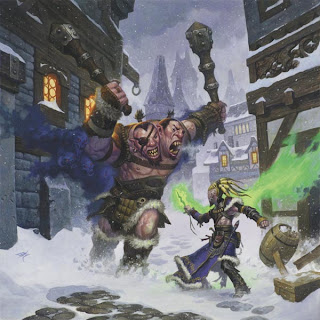A small town differs from a village not only in size, but also in feel and scope. Whereas a village will have but a few houses and perhaps an inn or one shop or irregular market, a small town will have greater organization.
Some of the houses will at least look permanent. There will probably be at least three or four places of business. Some degree of trade will have been established with both larger and smaller towns, cities and villages in the area.
For the designer this means a couple of things. First it means that there will be more NPC’s. This also means that the players will have more options. There will also be more buildings. This could mean that you have to go through a ton more work than you would in order to design a village, but in truth you don’t have to do that much more work.
In order to avoid going through a lot of work that is never used, plan the approach and exit of the PC’s. Are they going to be doing a lot of clue hunting or adventuring in the town? If not, why not? What is going to motivate them to move on? If they are going to stay, why? Where will the action take place?
via The Essence of Small Towns in Dungeons and Dragons | DnD Corner.

No comments:
Post a Comment